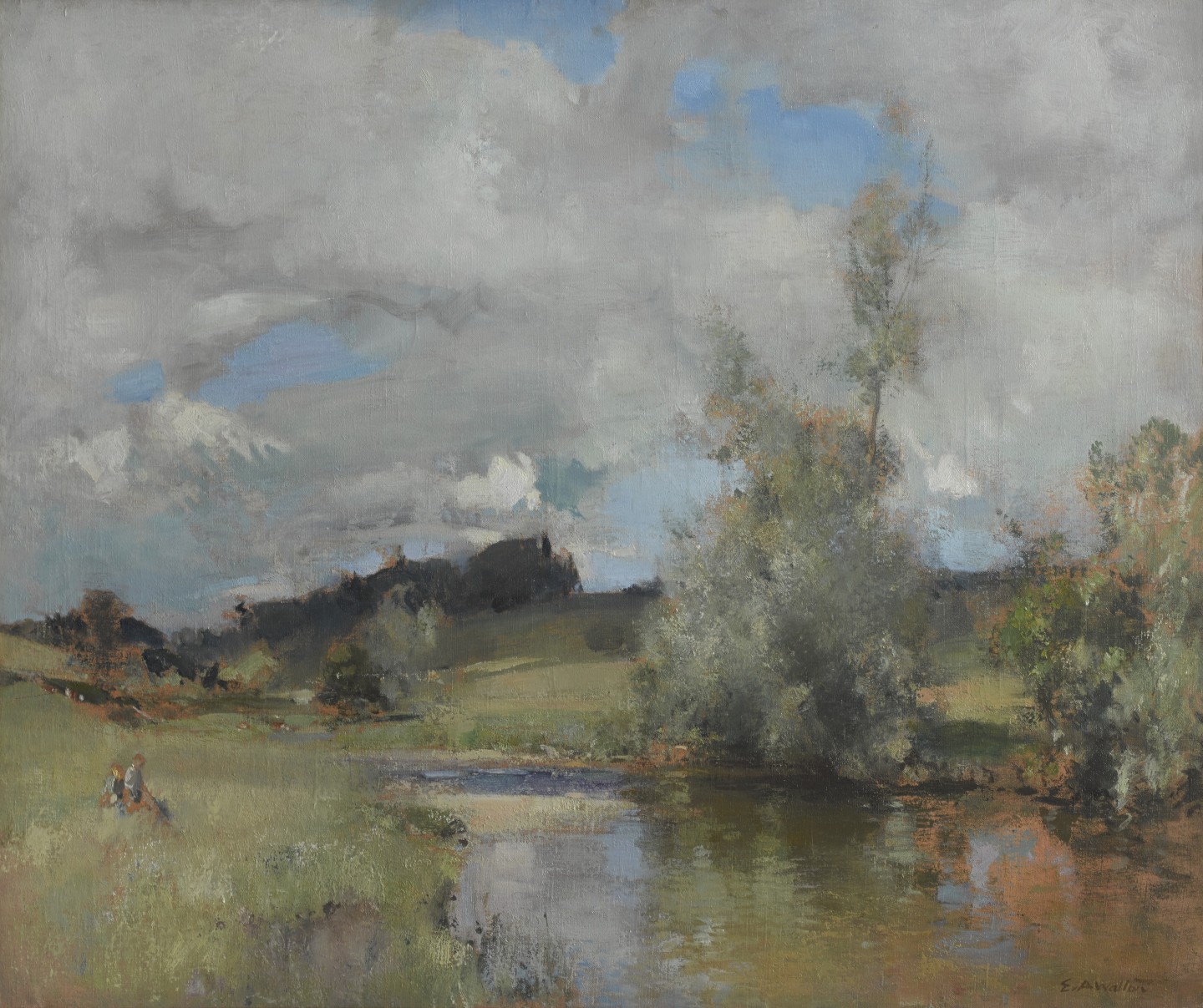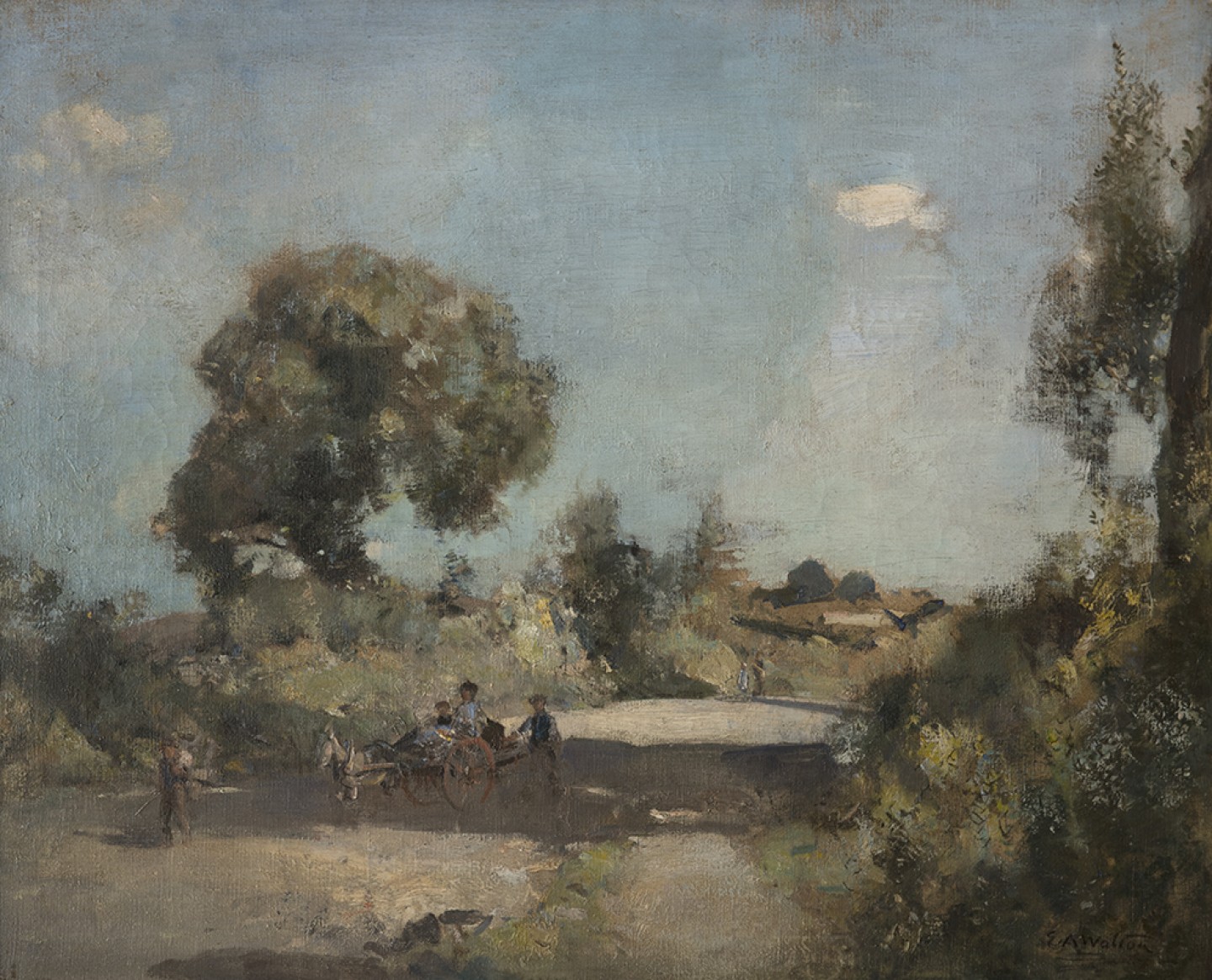DESCRIPTION
The Fleming Collection contains several landscapes by Walton and the beautiful and unusual Romance. The influences for this painting undoubtedly came from the artists and works that Walton was exposed to in London through his inclusion in Whistler's circle. The Glasgow School painter James Paterson, writing in a letter of 1928 to Alderman Cole of Liverpool about the collection of James Smith, noted: "The only other work I would specially mention is the beautiful little watercolour Romance by my late friend E.A. Walton RSA, in my opinion perhaps the most perfect thing he ever did."
DETAILS
-
Artist
Edward Arthur Walton
-
Date
c. 1895
-
Medium
Watercolour on cork
-
Object number
907
-
Dimensions unframed
39.5 × 32 cm
-
Dimensions framed
58 × 50 × 5 cm
-
Marks
Signed bottom right
-
Subject
ARTIST PROFILE
Edward Arthur Walton RSA PRSW, 1860-1922
Born at Glanderston House, Renfrewshire, Walton was the son of an amateur painter, Jackson Walton, and the elder brother of the interior designer George Walton. He studied art at Düsseldorf Kunstakademie in Germany and Glasgow School of Art. He made his debut as a landscape painter at the Glasgow Institute and was elected to the Glasgow Art Club in 1878, the year he met James Guthrie. Walton, Guthrie and Joseph Crawhall formed a close and lasting friendship, painting together at various places in Scotland and Lincolnshire, and abroad.
In 1889, James Guthrie and Arthur Melville visited Paris, where Walton and Guthrie exhibited at the Old Salon. Between 1893 and 1904 Walton lived in Chelsea, London, as a neighbour of John Lavery and Whistler - it was said that he was the only man with whom Whistler never quarrelled. He became involved with Whistler's circle, and this led to his taking a leading role in the formation of the International Society of Sculptors, Painters and Gravers, which was composed of artists who had been excluded from the Royal Academy, the New English Art Club and other academies. The first exhibition included works by, among others, Toulouse-Lautrec, Puvis de Chavannes, Redon, Bonnard and Vuillard.
Whistler championed the right of the artist to choose his own subjects and find beauty where an untrained eye might not. His influence on the Glasgow Boys can be seen particularly in the last decade of the nineteenth century, when they began their gradual move away from the Realism of Bastien-Lepage towards the more decorative treatment of modern life.
Although based in London, Walton made several trips to Suffolk, where he produced a series of landscapes in both oil and watercolour. In 1904 he returned to Scotland to live in Edinburgh, renewing his friendship with Guthrie, who was by then President of the Royal Scottish Academy. Together they visited Algiers and Spain in 1907 and Brussels and Ghent in 1913. Latterly, Galloway became Walton's favourite painting ground. He was a leading member of the Glasgow Boys, but, in contrast to the majority of the group, his work in oil and watercolour was of a consistently high standard throughout his life.









